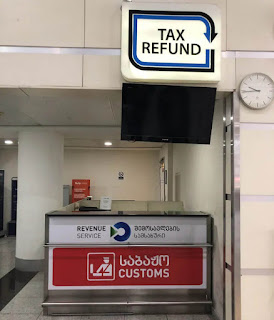Sri Lanka — A Visit to the Tourism’s Past
Travelling to Sri Lanka is like going back in time. There are not too many tourists around and the atmosphere is laid-back. It is like Thailand some 20+ years ago.
We were expecting another India when landing in Sri Lanka, but were pleasantly surprised. There is less harassment of women, and sellers and tuk-tuk drivers leave you alone if you say No thank you or, in a local way, do a lopsided head wobble.
Sri Lanka is experiencing a surge in tourism but still trying to catch up with the opportunities lost in a 30-year civil war. The country receives annually 1,5 million tourists, while for example Thailand attracts 25 million. Sri Lankan tourism infrastructure is undeveloped. New businesses are opening and many of them are quickly closed. At times, the amount of tourists seems to exceed the supply, but this is merely because tourists flock to the same destinations.
Colombo, Mirissa, and Yala
We went to three of the most popular tourist destinations: Colombo, where all international flights arrive, Mirissa beach, and Yala National Park. Most of the time we were staying in Mirissa, which is a typical small Asian village with a sandy beach. The amount of hotels, guest houses and hostels is moderate, and — fortunately — the place still lacks the Western style restaurants and supermarkets like Thailand 20 years ago. This is probably what attracts backpackers who are in search for cooler, less touristy destinations.
Yala is on typical safari tourist trap. We are against safaris as we don’t like to chase animals with a car just to see them or to take a photo. Seeing them randomly from a bus window or on a walk in their natural surroundings suits us better. This time we saw foxes, a rabbit, a wild boar, water buffaloes and monkeys, peacocks, and various other species of birds and bats. The landscape was beautiful, reminding us of African savanna, just like Mirissa beach reminded of Mombasa beach in Kenya.
In Yala, there was a chef cooking us Sri Lankan vegan delicacies. It was like a couple of days on a cruise ship at a sumptuous buffet lasting from morning till late at night. Generally, the south of Sri Lanka is Buddhist, but this does not necessarily mean that they are vegetarians. Sri Lankan Buddhism is ignoring Buddha’s teachings by accepting eating flesh. Only cows are considered sentient enough not be murdered for food. Animal abuse is acceptable as well as you can see in the video below. One of the Buddhist monasteries we saw was offering elephant riding to visitors.
Sri Lankan Buddhism is a strange mix of astrology and magic. Businessmen prefer to consult star charts to solve problems and so do troubled couples or their parents. Power crystals on top of the stupas turn universal energy good and make crops crow better.
For us, Colombo was merely an obligatory stopover rather than a sight to see, but compared to Indian cities it is rather manageable: smaller, less people, less hassle.
Train travel and visas
We travelled by train. Buses tried to overcharge us by asking extra money for our backpacks, while trains had fixed prices. Trains are Indian-style and have many classes, but because distances are short, there is less sleeping cars. Travelling is very slow. For example our 138-kilometre trip from Mirissa to Colombo took 3,5 hours, and because we needed a connecting train to the airport, we had to wait for hours because service is not frequent. Travelling by car is not any faster. Our 145-kilometre trip from Mirissa to Yala took us the same 3,5 hours with 65 km/h maximum speed. There are no expressways, and dogs, cows and water buffaloes are often blocking the road.
The biggest obstacle for tourism growth in Sri Lanka is not infrastructure, however, but their visa system, which makes coming to the country more costly and complicated than to competing Asian destinations. EU nationals can buy a one to three month visa on-arrival at the airport. If you take a one-month visa but would like to stay longer, extension is possible, but only in Colombo immigration office. We didn't bother to try that, but those who did, told us that the process is pretty straightforward although time-consuming. Officials make you run from counter to counter and queue just to make you sweat and look stupid. For us, the one-month visa cost 35 USD each and extending it with two months would have been another 35 USD. We don't particularly enjoy visa procedures so we decided to continue our travels instead.







Comments